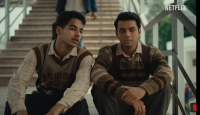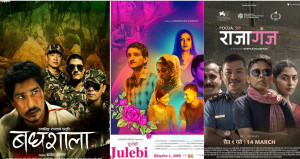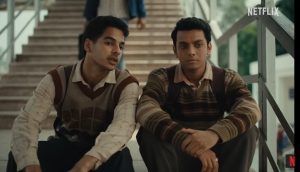Movies
Netflix’s Bulbbul has little creative brilliance, saved only by its actors’ performances
The latest Netflix film is a retelling of a ghost story from a feminist point of view, showcasing great work by a lesser-known cast who overpower the not-so-strong screeplay.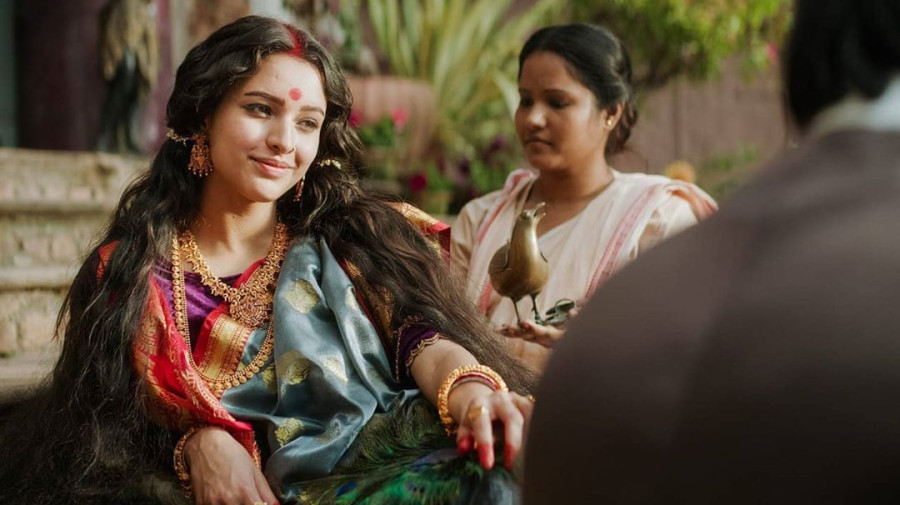
Ankit Khadgi
Since the untimely death of actor Sushant Singh Rajput, the discussion around nepotism has resurfaced in the circles of Hindi film enthusiasts. Everyone is now talking about how fickle Bollywood is as an industry, where every Friday a new star is born—but it's easier to be that star if you come with connections. Nepotism has clouded over the industry.
Amid such discussion around nepotism, Netflix’s latest original Hindi film ‘Bulbbul’, written/directed by debutant Anvita Dutta, was released on June 24. And the film fits around this discourse perfectly because it features actors from non-filmy backgrounds, with a producer, Anushka Sharma, an actor who’s also from a non-filmy background backing it.
Set in the 19th century, during the British Raj, ‘Bulbbul’ is a genre-defying movie that plays in a non-linear structure, telling the story of Bulbbul (played by Tripti Dimri), a child-bride, who later turns into the matriarch of a haveli.
Bulbbul is married to Indranil (played by Rahul Bose), a Bengali aristocrat who’s her father’s age. In her husband’s big haveli, Bulbbul lives with Indranil, his twin brother Mahendra, his sister-in-law Bindoini (played by Paoli Dam), and his younger brother Satya (played by Avinash Tiwary).
As they are similar in age and share the same love for stories, Satya and Bulbbul start becoming close. Sensing their burgeoning friendship, Indranil sends Satya to London, ending the relationship. The story then takes a five years leap, where things are quite different. Satya comes back to see a very different Bulbbul. She’s no longer a naive, playful girl, but the head of the haveli, the thakurain on whom the villagers depend to seek justice and to solve their problems.
Outside the haveli, in the village, men are getting killed at night. Villagers believe the killings are being committed by a chudail (witch) who has inverted legs. Satya, a British educated man, on the other hand disregards the existence of the supernatural creature and starts his own investigation. And this is basically the whole premise of the movie, nothing extraordinary. Yet, the film manages to hold the attention of the audience, and the credit has to be given to the performances of the cast.
Dimri as Bulbbul, who has to do most of the heavy lifting in the movie, lives in the skin of the character. In the beginning of the movie, where the conflict hasn’t arrived, she perfectly brings out the naivety and innocence required for her character’s age. Her body language, demure, and even the way she speaks, reflects the experiences of many girls, who are in the age of puberty, where life experiences haven’t moulded their personality.
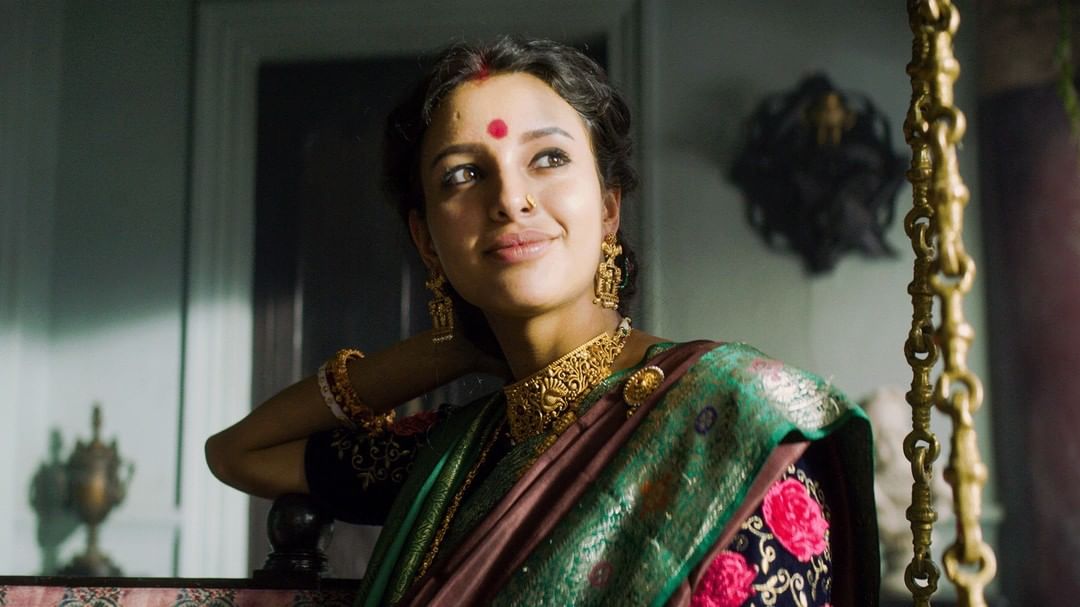
Likewise, when she becomes the thakurain, the matriarch of the haveli, her portrayal of a strong, no-nonsense lady who owns her sexuality is portrayed by Dimri in such a convincing manner, that one becomes in awe of the acting range she posses even if she’s just one film old.
Meanwhile, Bose’s portrayal of Mahendra, the younger twin is nothing special, as the writing doesn’t allow him to do much: his character is written with the same stereotypical troupe of representing people living with mental illness. However, as the elder brother, Indranil, he brings authenticity to his character, a patriarch, living with insecurity of having a younger wife.
Paoli Dam, as a jealous sister-in-law, is equally convincing. She brings complexities to her character, leading people to empathise with her, as she has also been a victim of patriarchy, as well as her cunning and manipulative behaviour can equally make people loathe her. Although Tiwary, who was phenomenal in 2018’s Laila Majnu, has the easiest role among the cast, and his conviction to sincerely play his role is visible.
The actors’ work is what pulls the film through. The plot which Dutt builds up is too predictable. The suspense isn’t really suspenseful: quite early on in the film, the audience can easily guess who’s behind the gruesome killings in the village. Likewise, since the movie is just one hour and thirty minutes long, the characters do not get enough space to show their multi-facet personalities.
Dutt’s attempt in creating a suspense thriller based on local folklore of chudails who are believed to be man-eaters deserves a mention as well. Because this is where, as a writer, Dutt succeeds. The re-telling of a folklore from a feminist point of view is an eye-opener for many people, as it makes people rethink about the stories featuring female ghosts like that of chudails with a completely new lens. According to folktales, chudails are considered to be the spirits of those girls/women who were killed after men raped them, but they’ve never been emphasised. The film makes us question ourselves as to why we never questioned the patriarchal structures that lead to the rape and death of women/girls? And why is that even in folklore, for a woman to receive catharsis and justice she has to be a ghost?
Women’s feet is also a significant motif in the story. From the very beginning of the movie, Dutt clearly shows how society wants to control women’s feet, which serves as a metaphor for women’s freedom. From a toe ring, bichhua in Hindi, which married women are supposed to wear, because it is believed that it keeps women in check by pressing a nerve in the toe, to the inverted legs of the chudail, or the horrifying scene where an act of gender violence is conducted, Dutt uses the analogies of legs to reflect patriarchy.
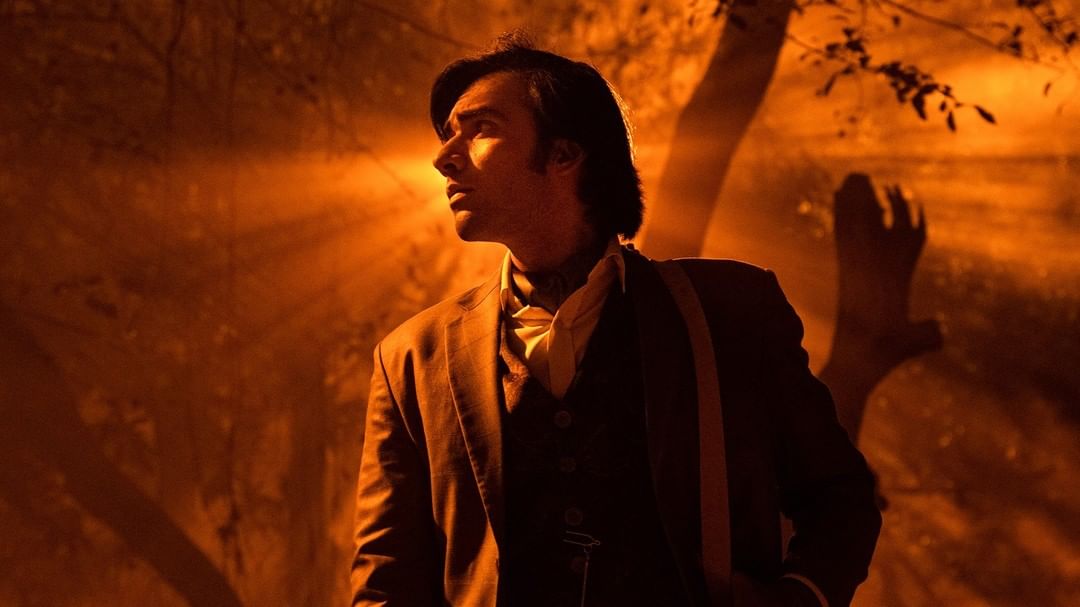
There’s also the deft use of colours, like blood red and shocking pink, which appear on the screen when the chudails haunt men, that need a mention. Making the use of a red palette in most of the scenes is a good creative choice, as it adds a mystery element as well as serves a storytelling purpose. The colours are used by women to adorn themselves, either through sindoor or saris, and they historically symbolise women’s dedication for their husbands. However, because patriarchy has suffocated women, they often feel trapped in this redness. And thus the same red also stands for strength, valour and a fire in them as well, something that patriarchy has always tried to blow out.
Siddhant Diwan’s talent to capture the frames exquisitely, the beguiling soundtrack by the brilliant Amit Trivedi, and the believable sets reflecting the settings of the period by Meena Aggrawal is spellbinding and sets an example of what can happen when talents like these decide to collaborate.
But the screenplay is the biggest let down in the movie. Dutta’s ambition in redefining the horror and suspense genre leads her to murk the fundamentals of writing a suspense story: keeping the suspense intact.
Regardless of the predictability, the acting talent of the cast, especially Dimri, holds the whole film together, making us invested in the journey of Bulbbul.
And this is why you should watch Bulbbul. It’s not a perfect film but it has actors who are talented and deserve appreciation for their skill. In an age where nepokids still rule Bollywood, these are the underrated actors who prove that when it comes to acting, talent precedes over lineage.
Film: Bulbbul
Starring: Tripti Damri, Paoli Dam, Rahul Bose, Avinash Tiwary
Director: Anvita Dutt
Stars: 2.5 out of 5




 12.12°C Kathmandu
12.12°C Kathmandu



